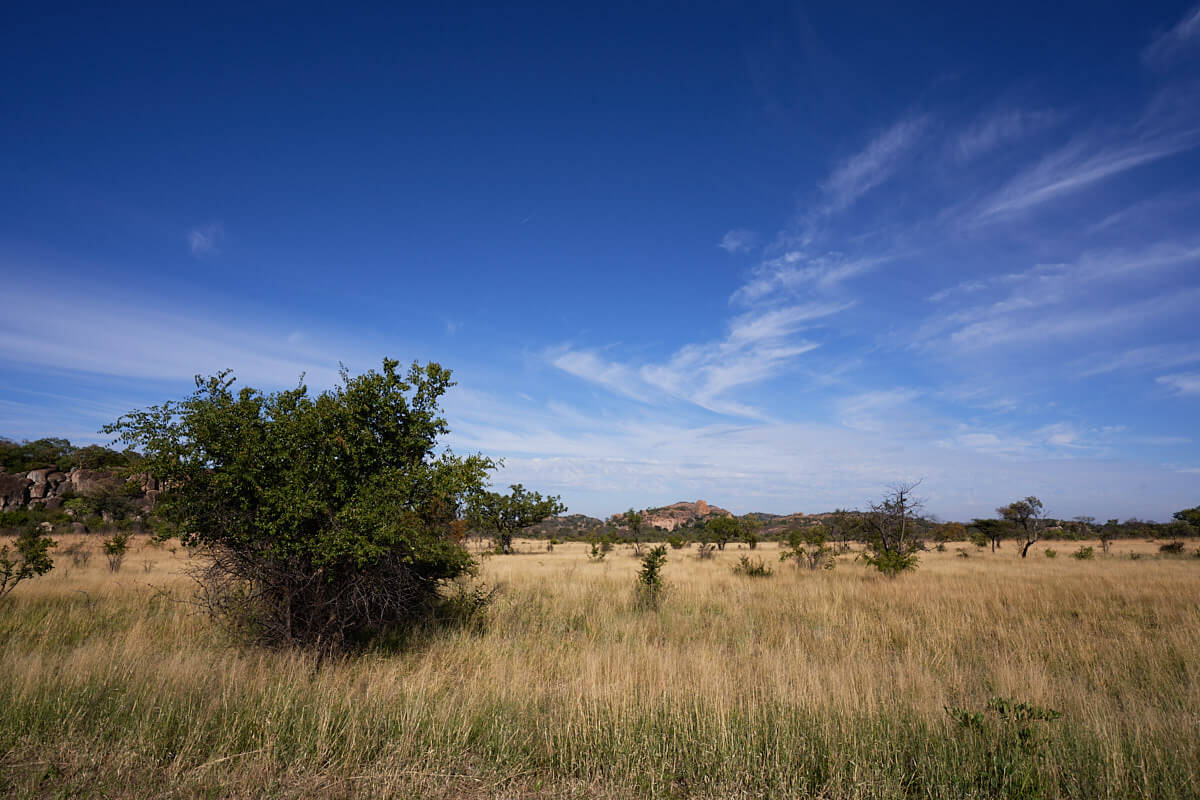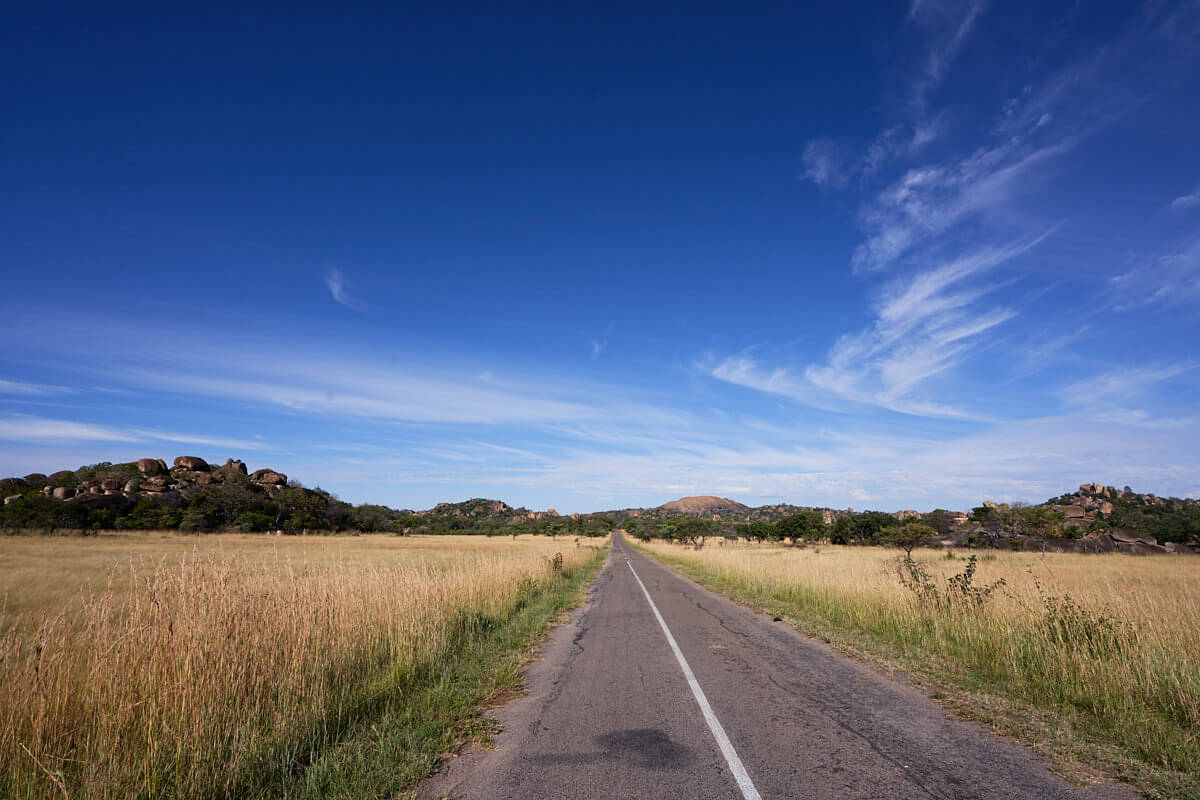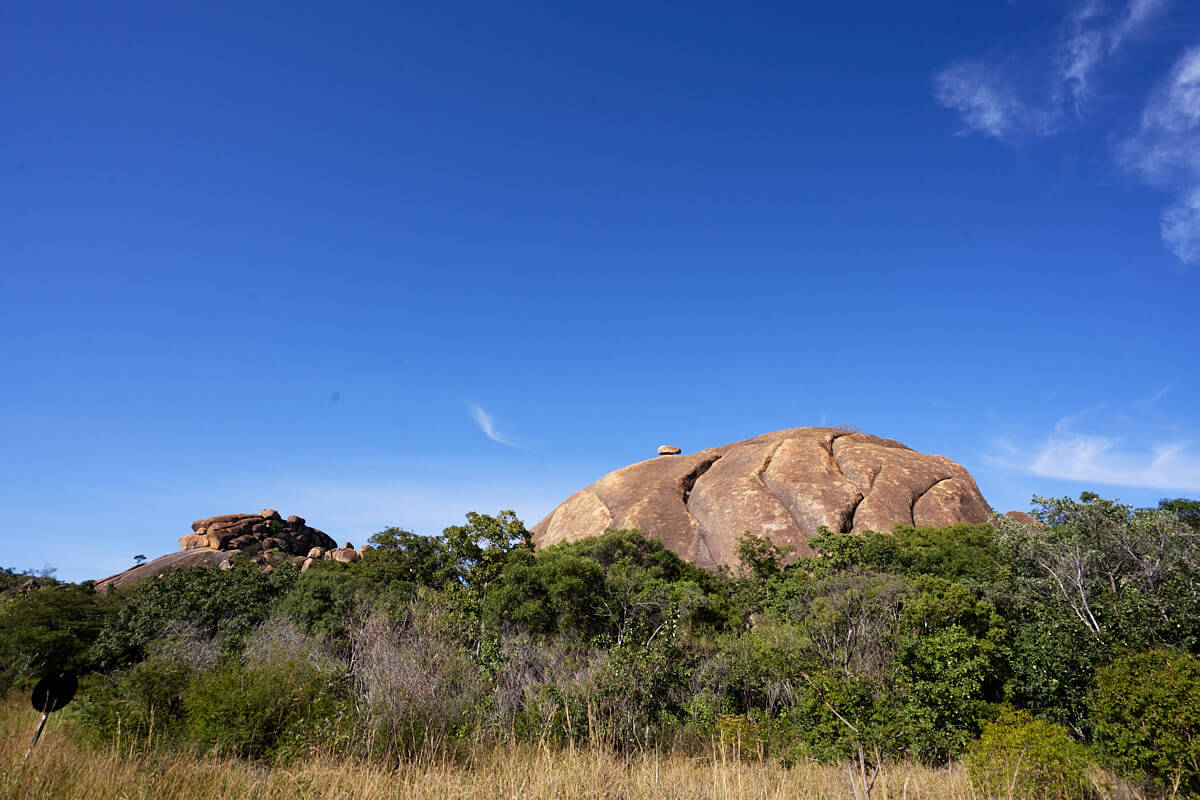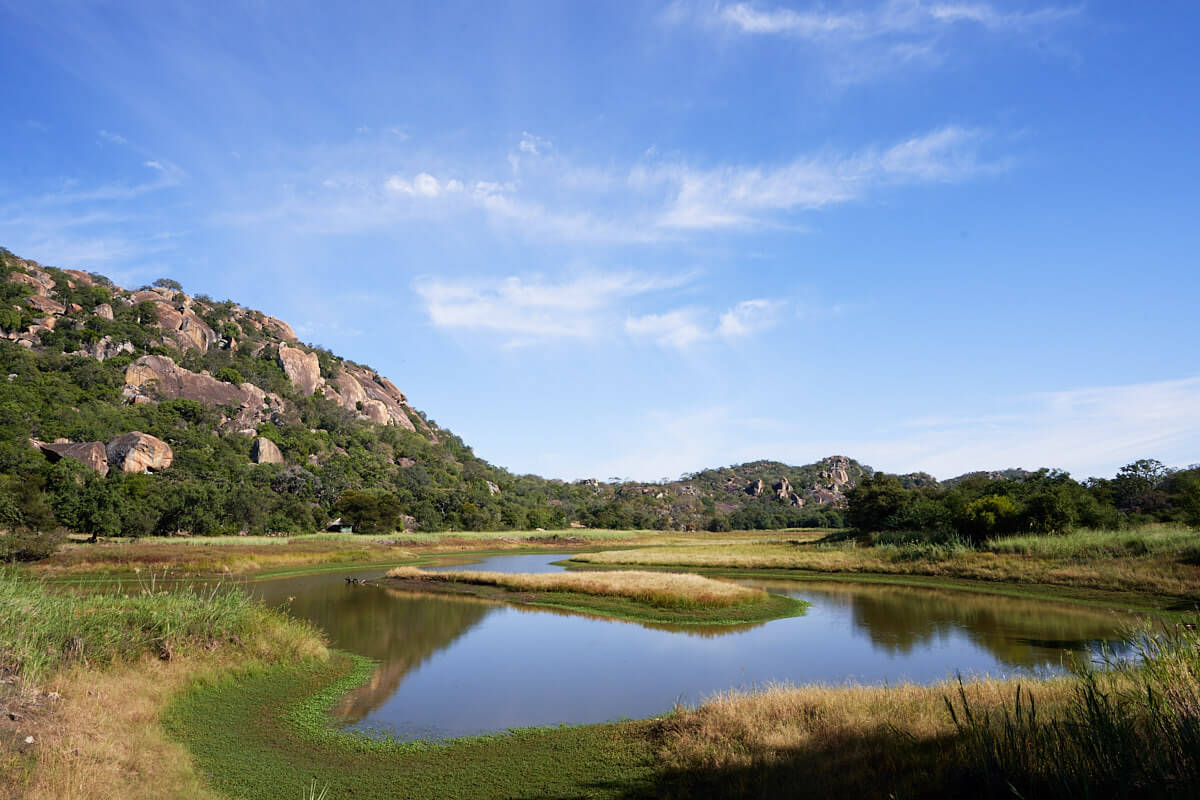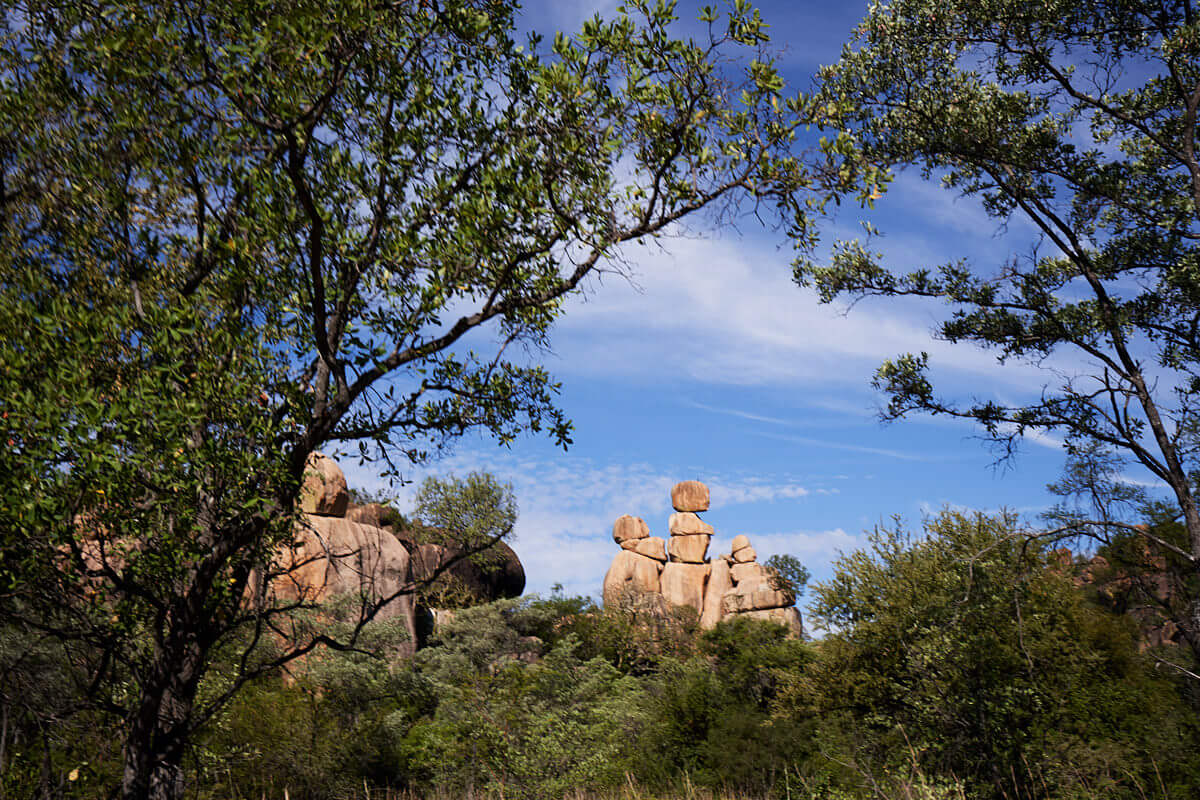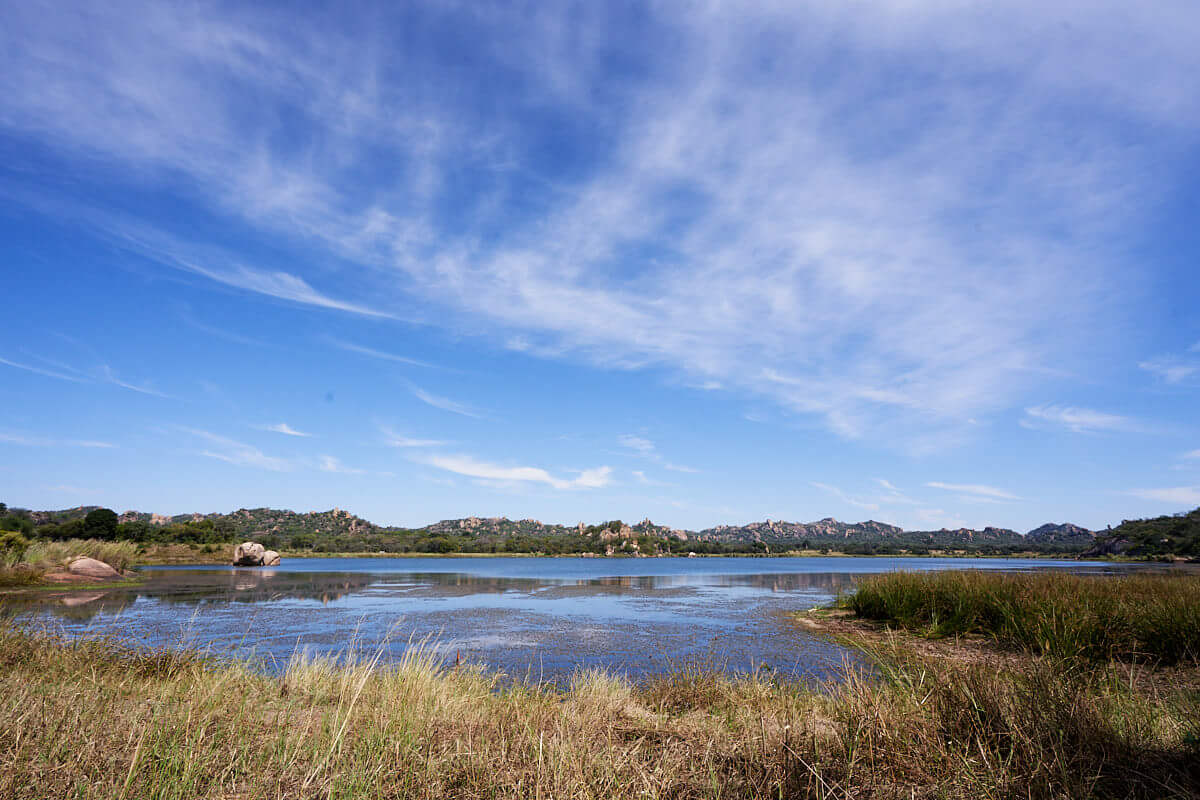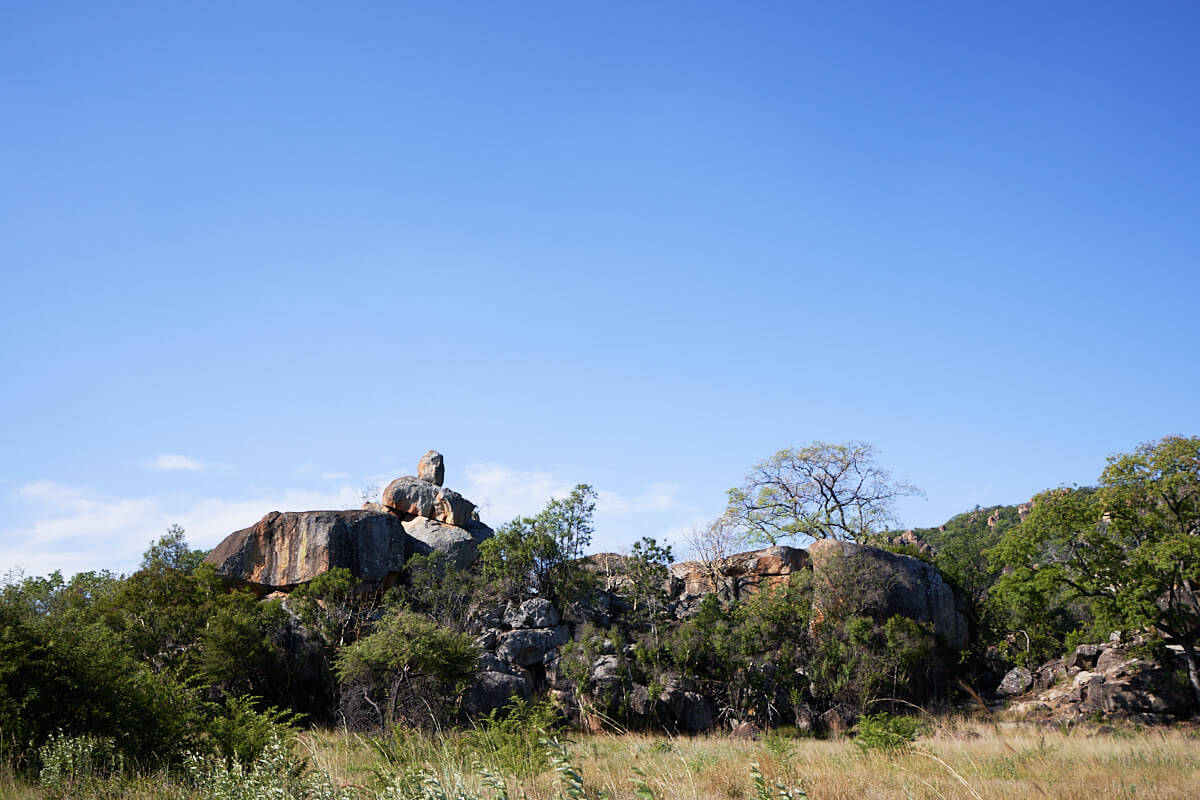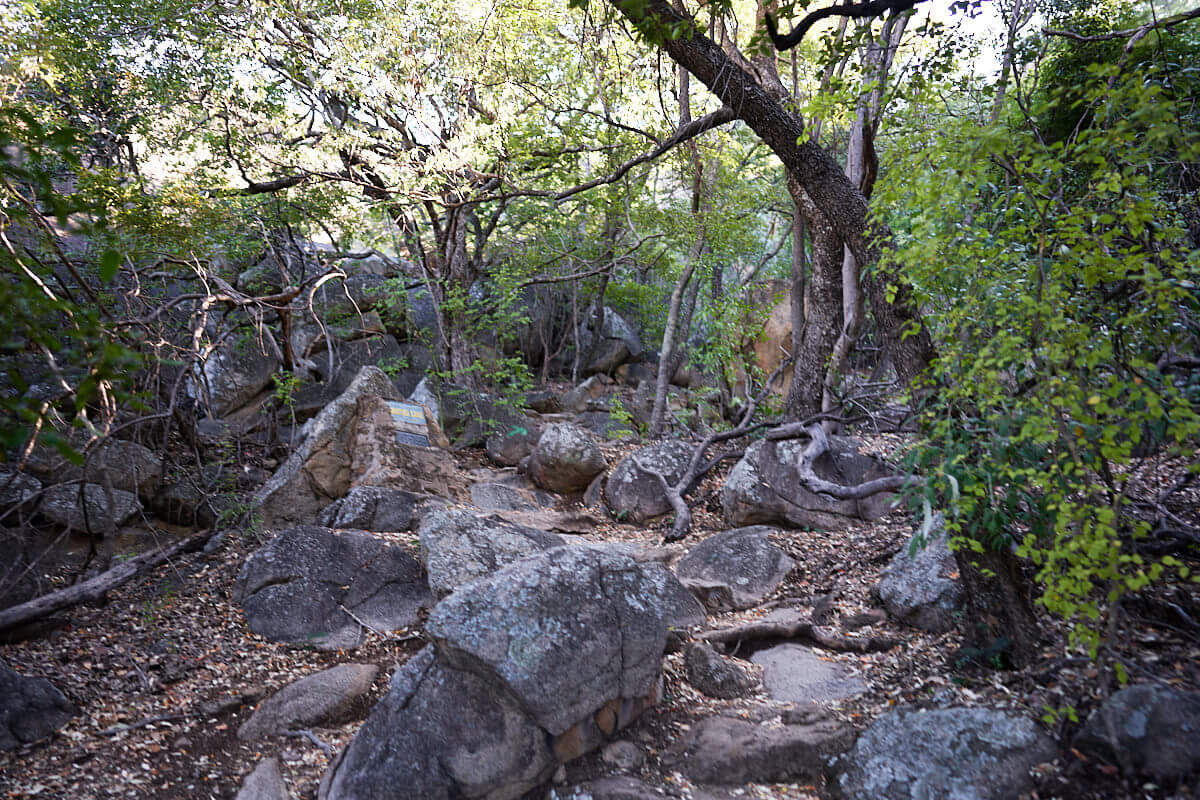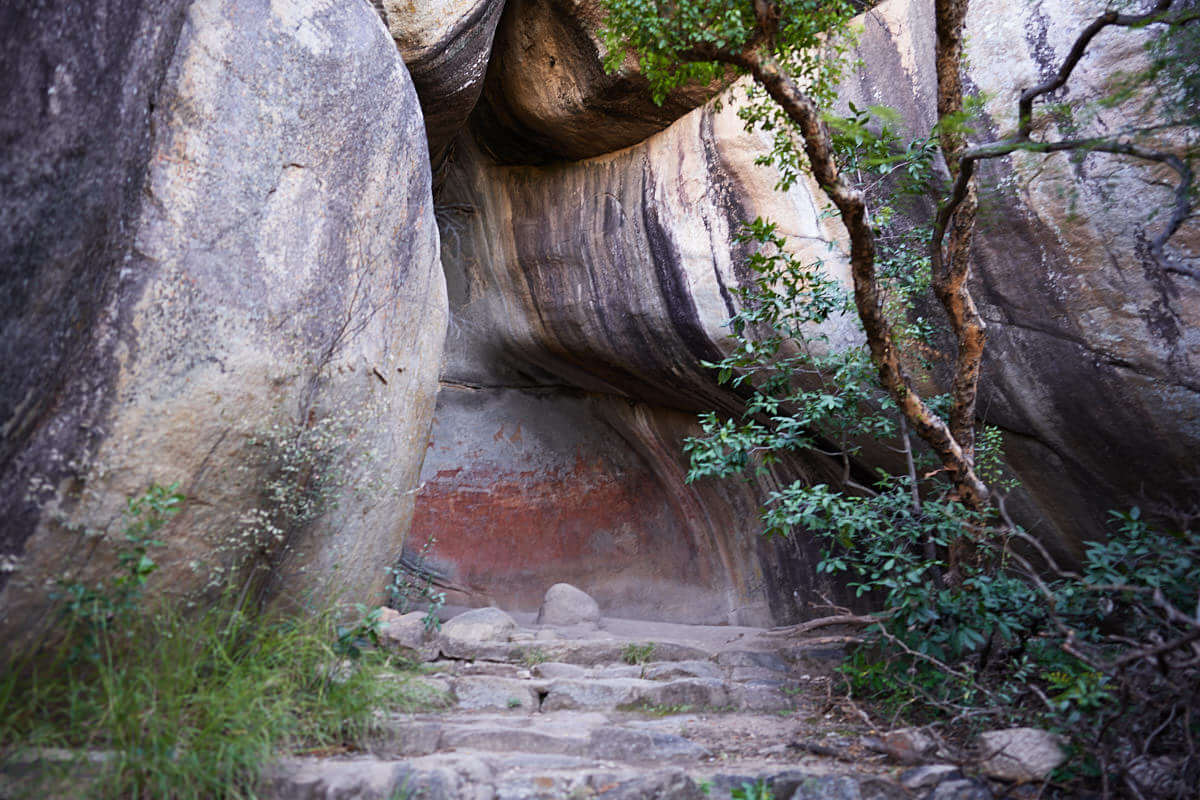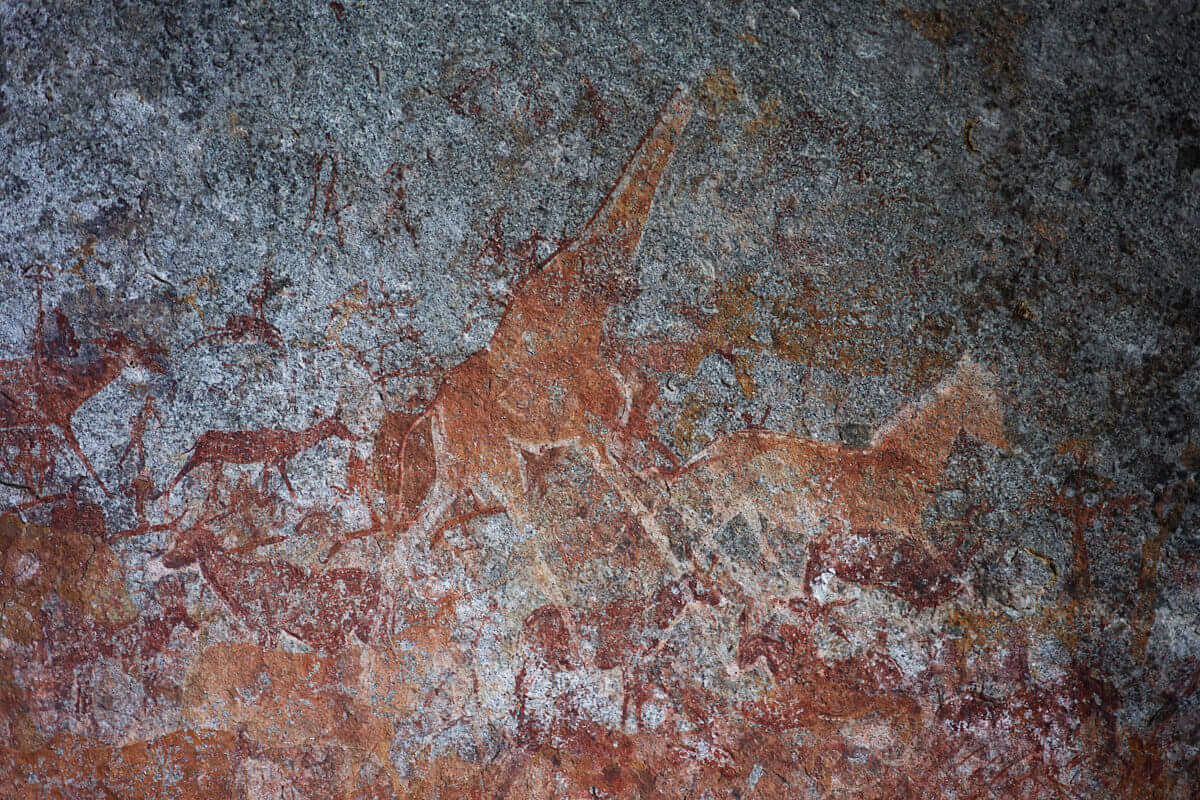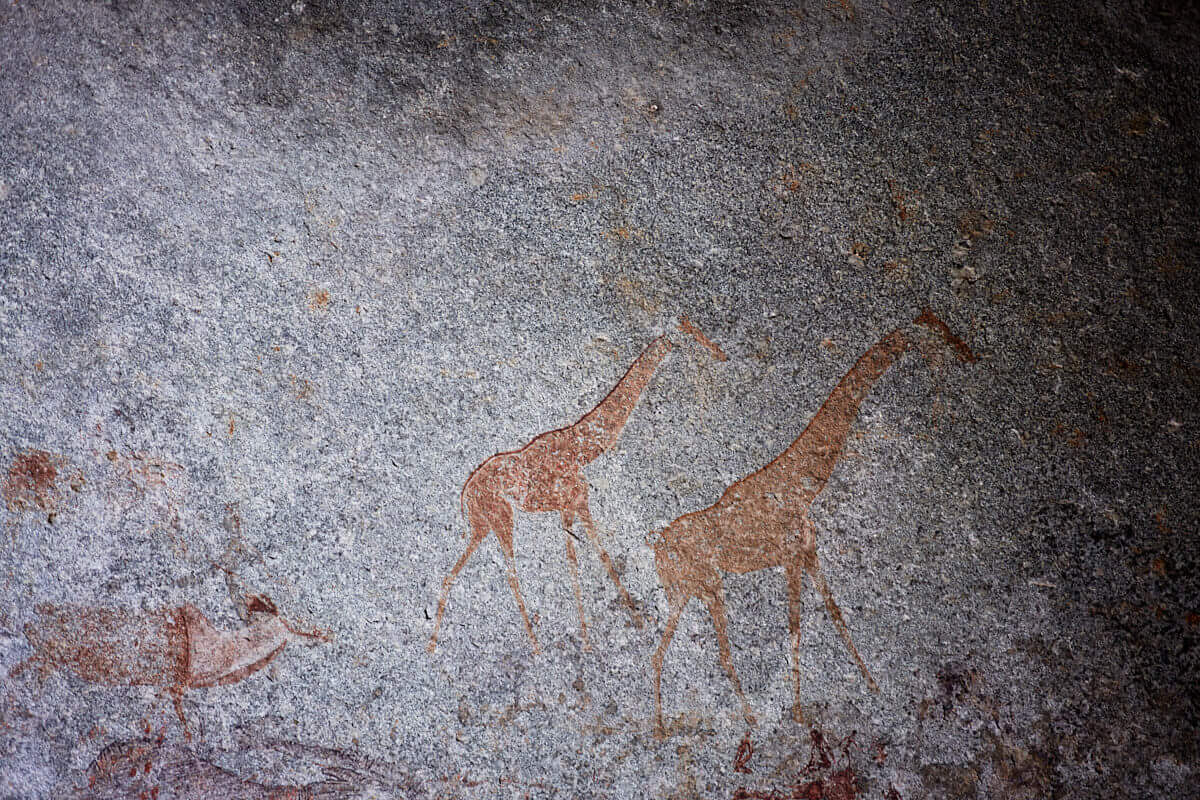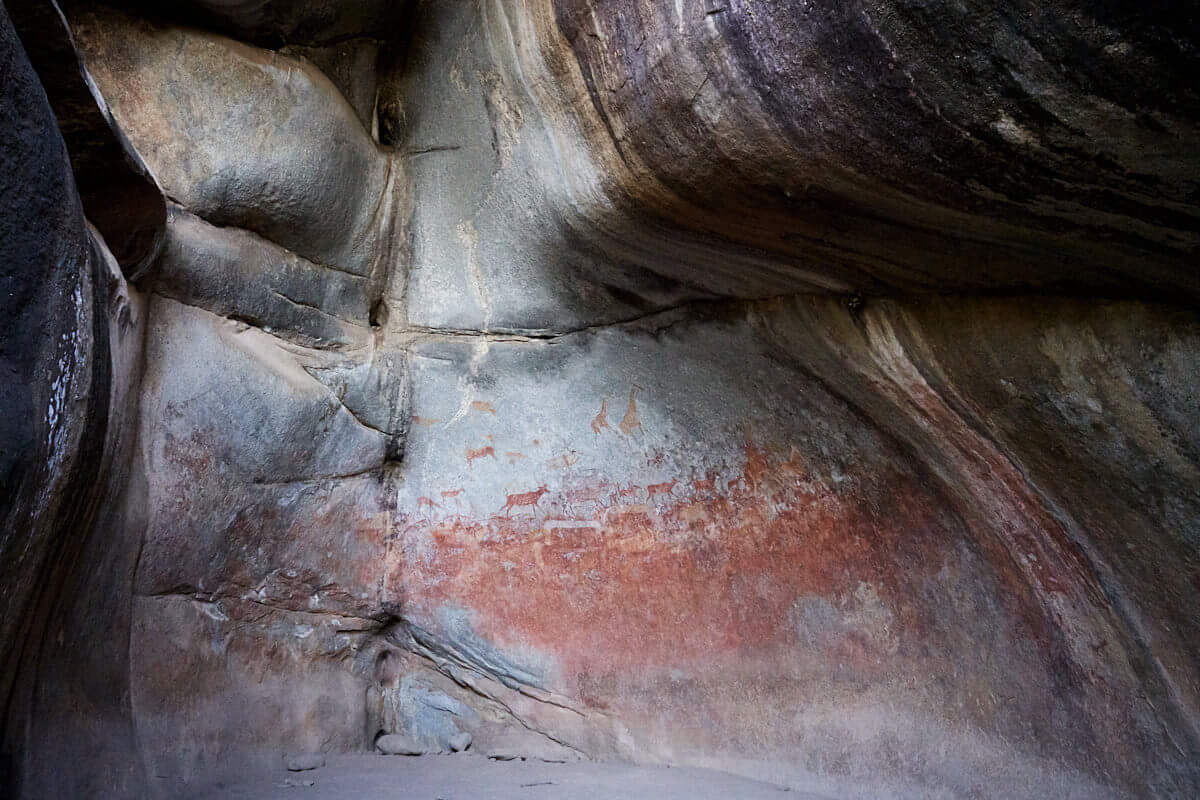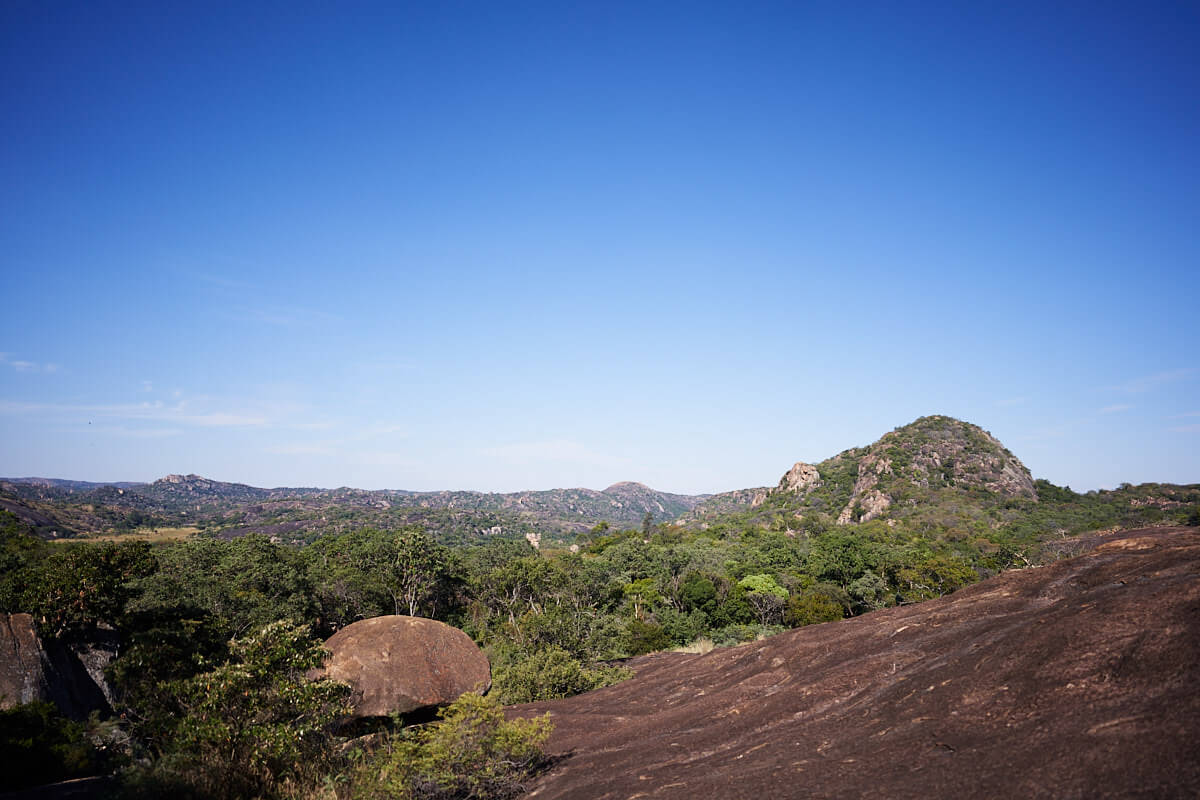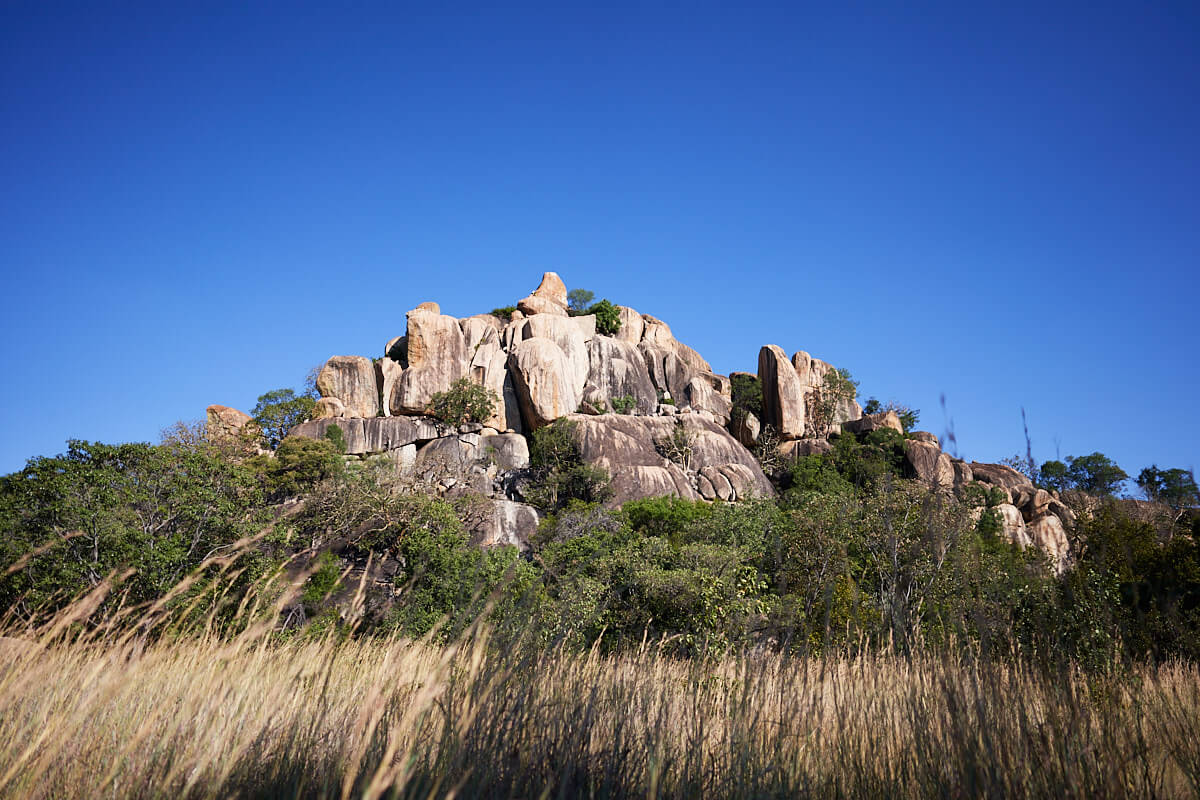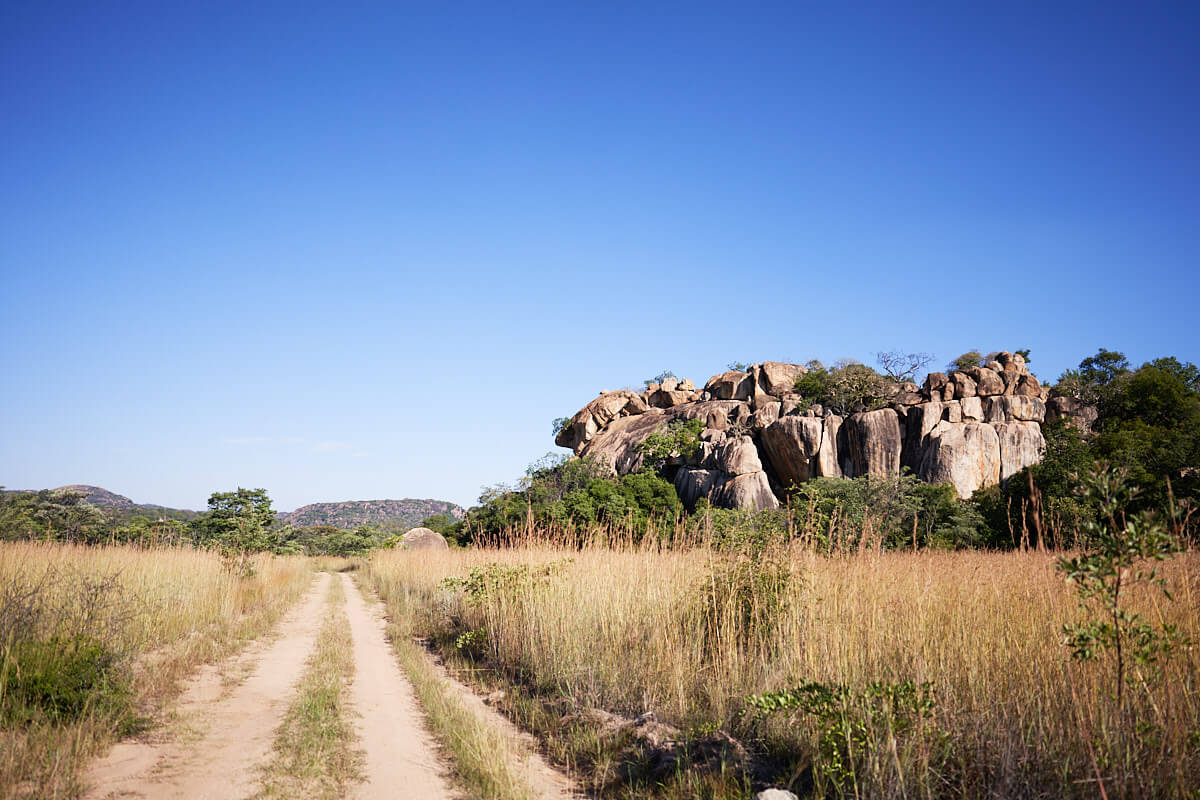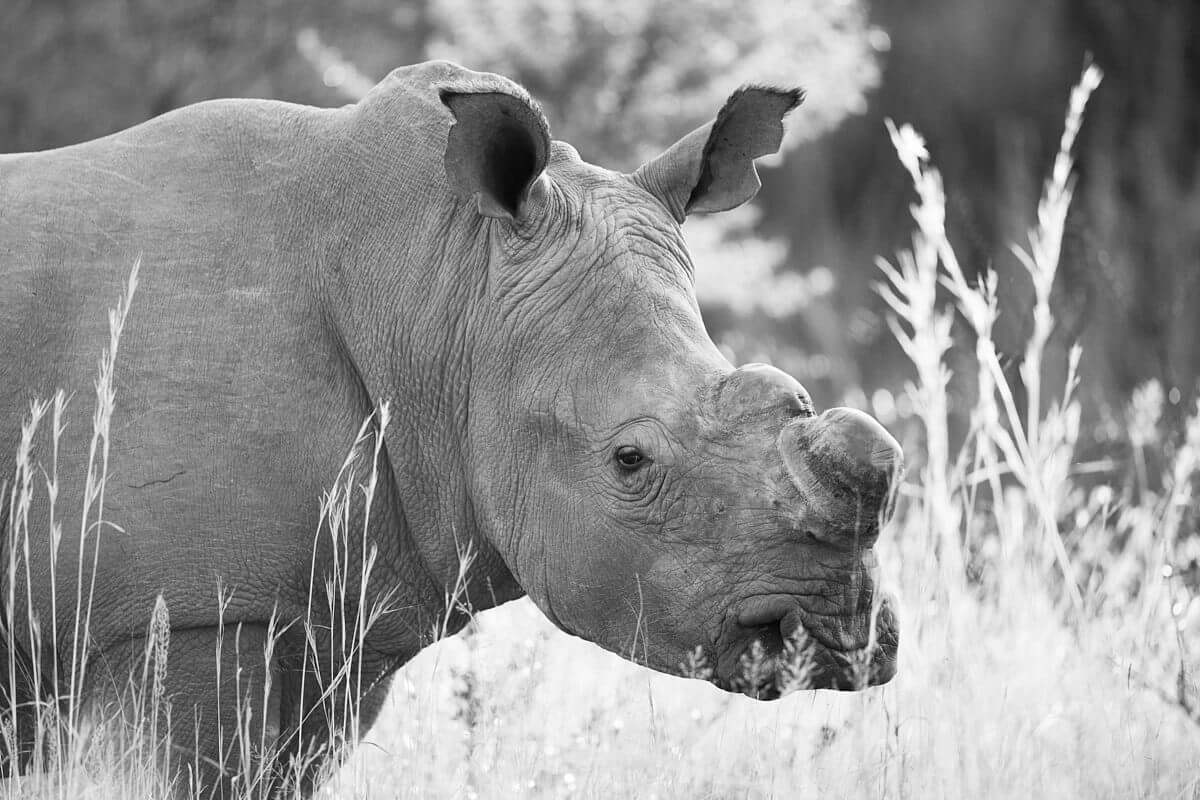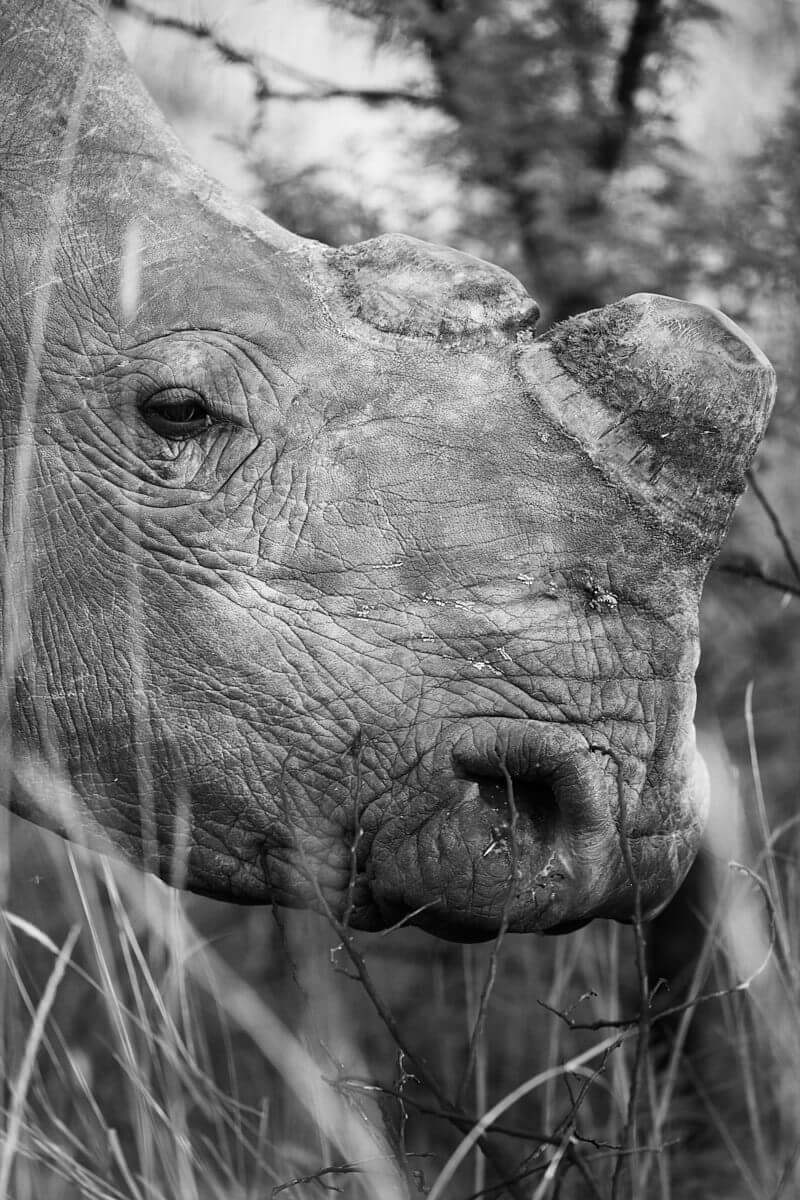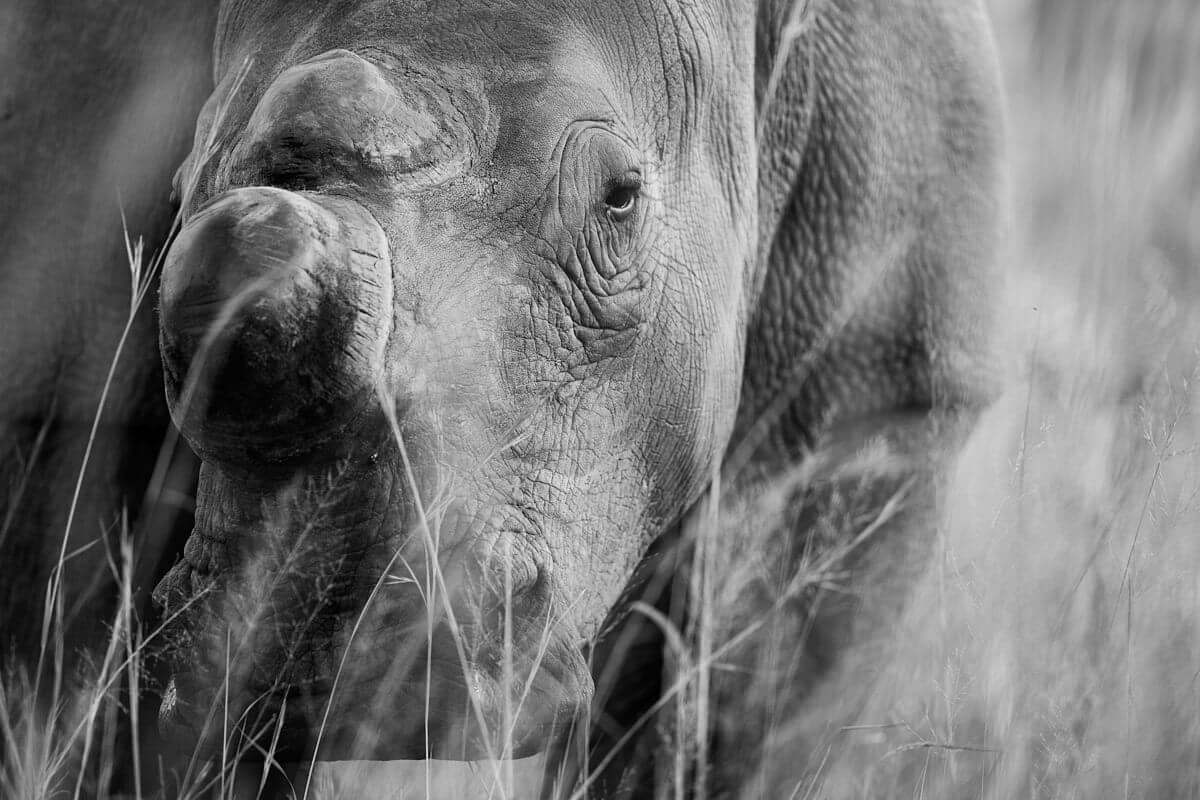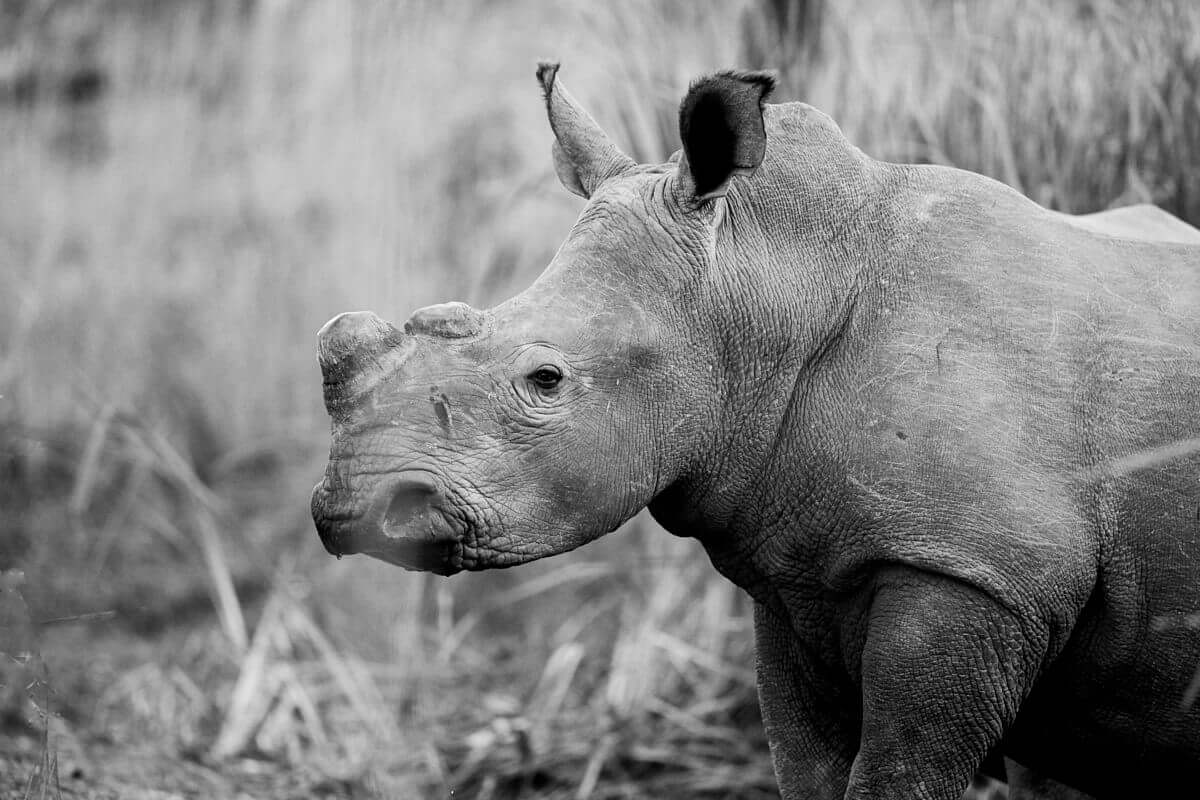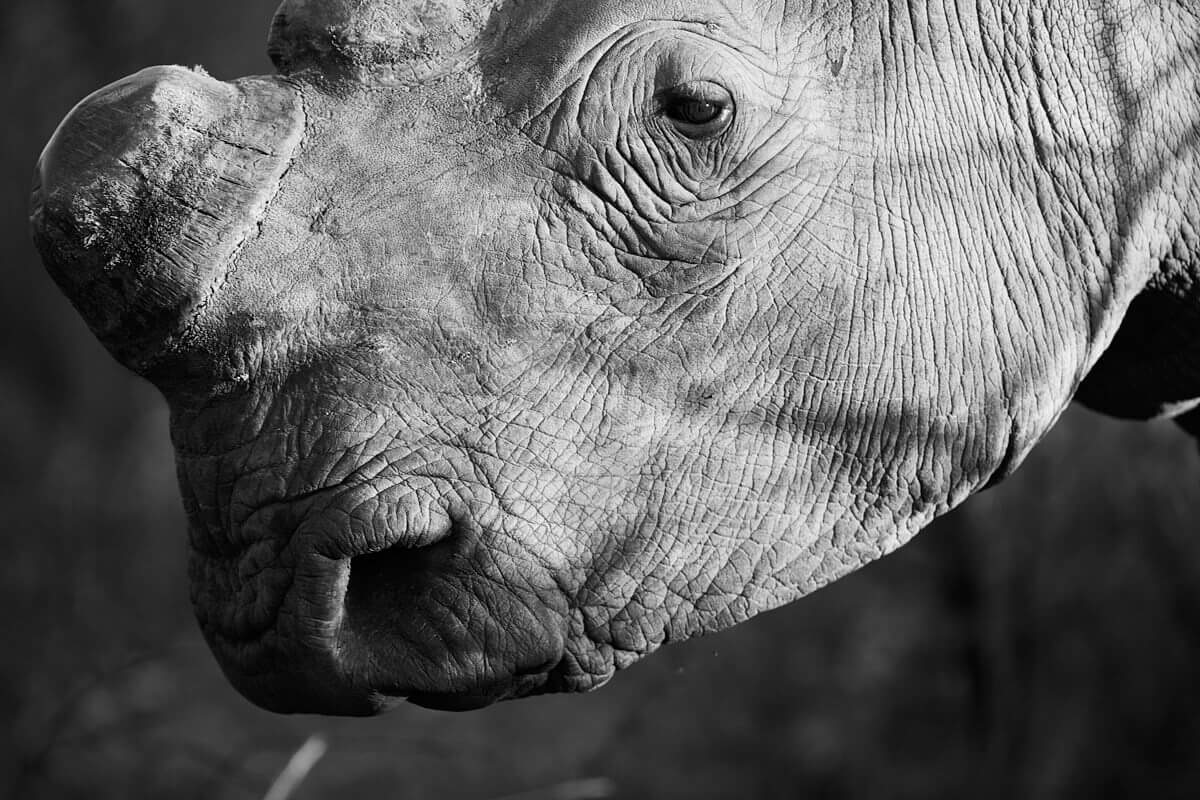Great Zimbabwe
We left Gonarezhou NP and drove via Chiredzi to Masvingo with the aim to visit the largest ruins site in Southern Africa. Great Zimbabwe was built around the 11th century, consists of three different sites and served as a royal seat. Details about it are easy to find on the internet.
We wanted to see what was left of the ruins and leisurely drove to Masvingo in one day. Driving through the city of Masvingo revealed the situation in Zimbabwe: decay on buildings everywhere. The everyday life of the people goes on and accordingly busy and hectic was the hustle and bustle on the streets.
Check-in at Norma Jeane’s
We followed Al and Gail’s recommendation and booked ourselves into “Norma Jeane’s Lake View“. This hotel with an attached campsite is located not far from the ruins overlooking Lake Mutirikwi. We decided to stay there for two nights. On the first evening we enjoyed a 4-course meal in the hotel’s own restaurant. The friendliness of the people was unsurpassed here as well. We enjoyed it very much to have deep conversations and to experience people who are not just playing some role but are real.
The people of Zimbabwe are very different from the people in the surrounding countries. The visit to the ruins was rather unspectacular for us. Somehow we lack the access to such ‘celebrities’. We were impressed by the technique used to build round structures and passages without any edges. Possibly, such monuments leave us cold because it concerns a long past, and we can recognize from it no use for the present. The view of the mountain ruins is partly quite wonderful, and so we climbed every elevation that offered itself.
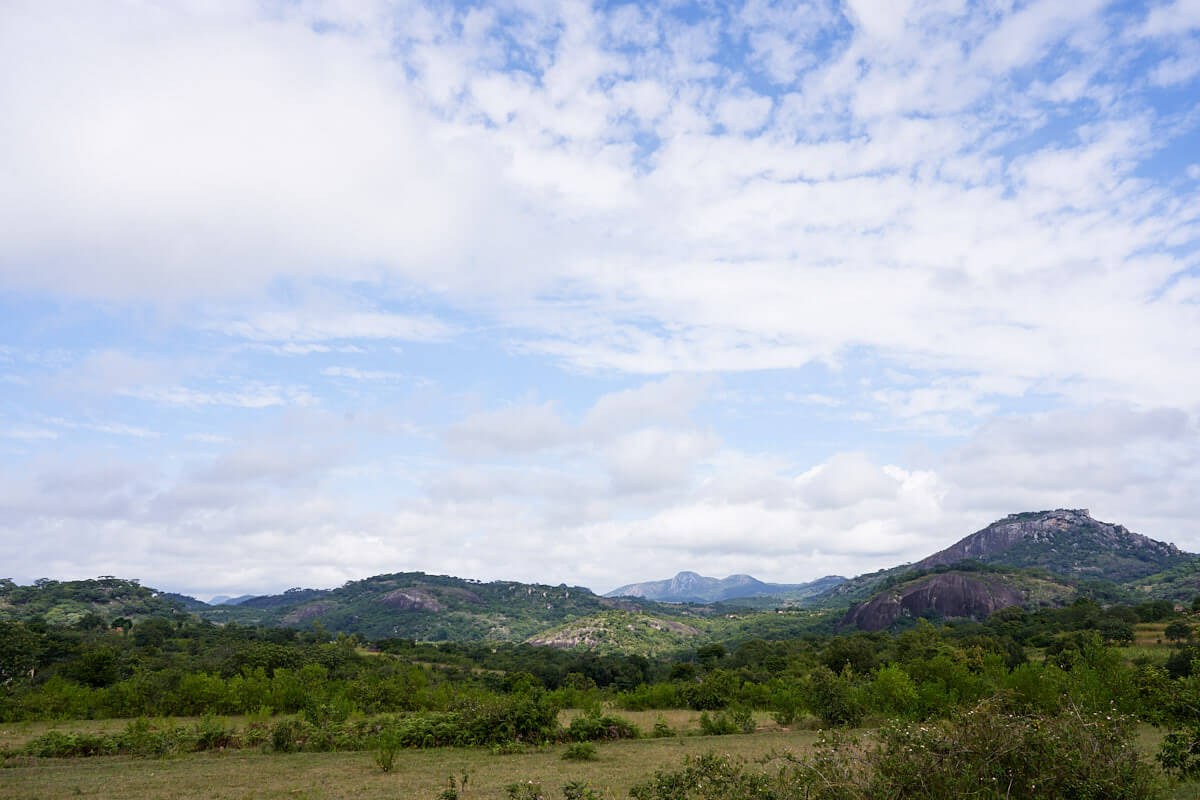
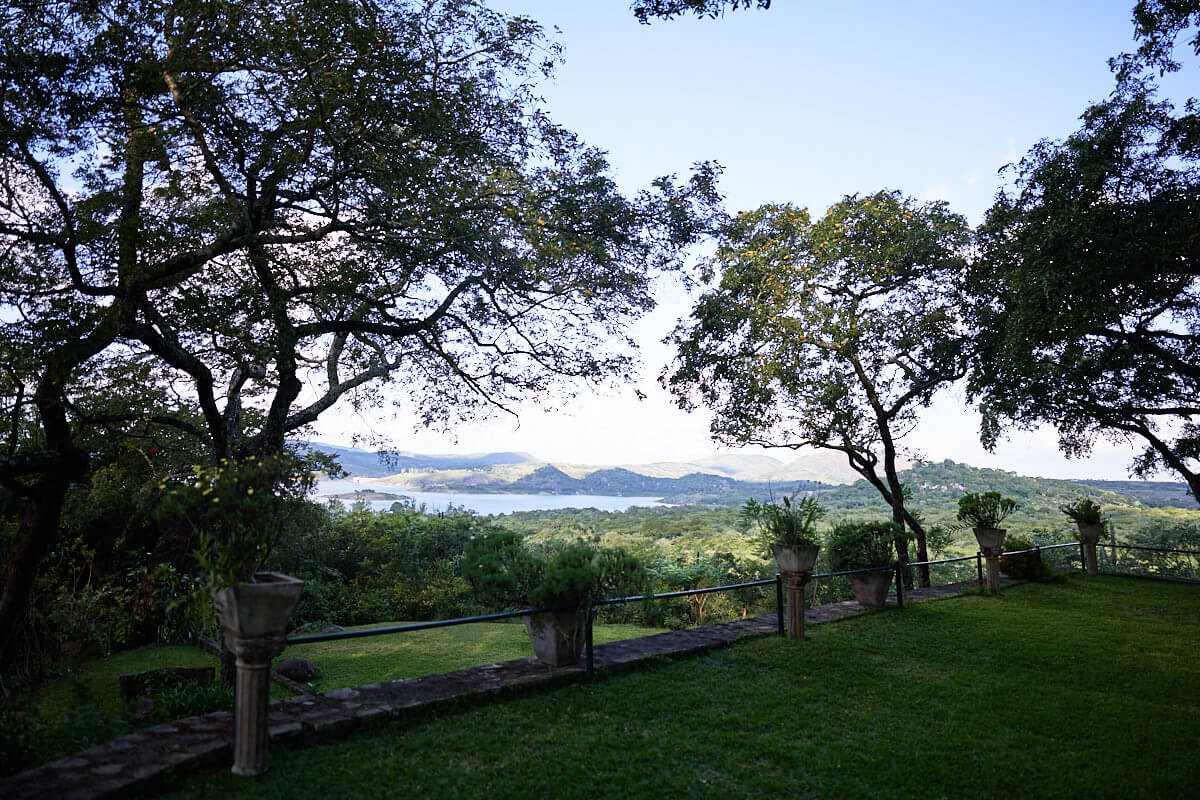
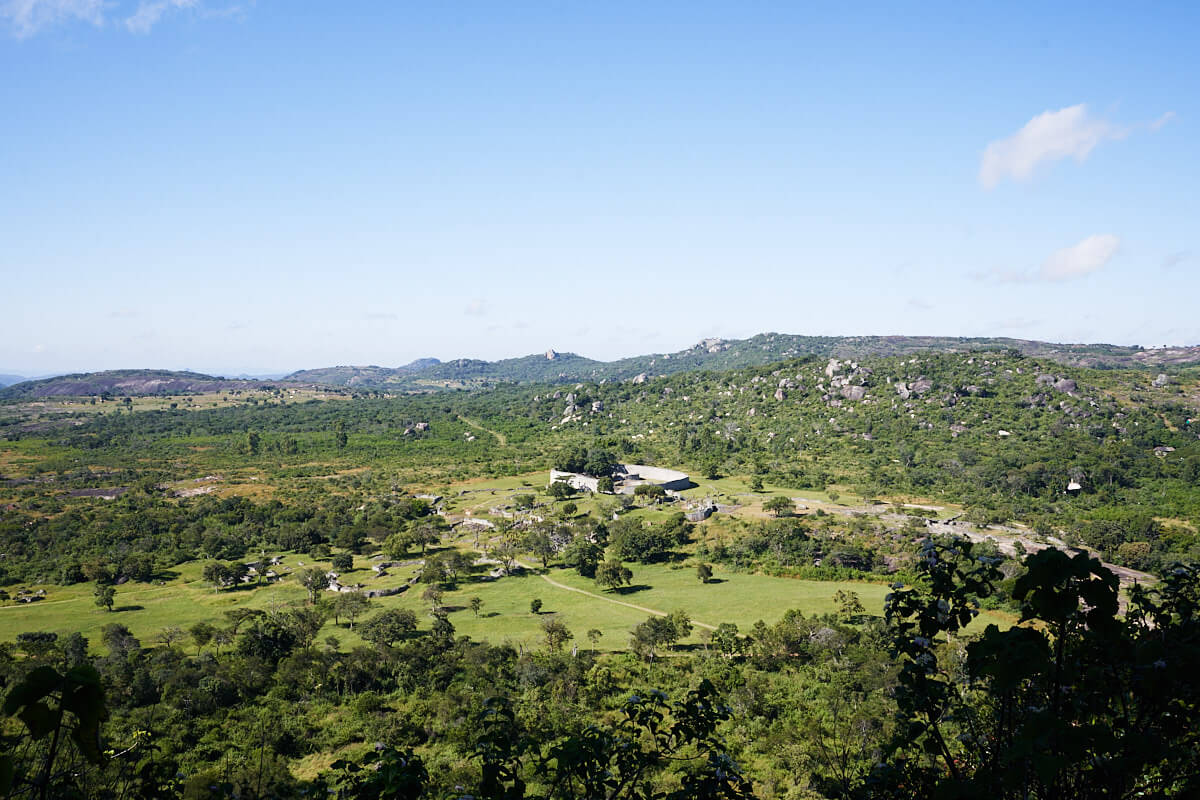
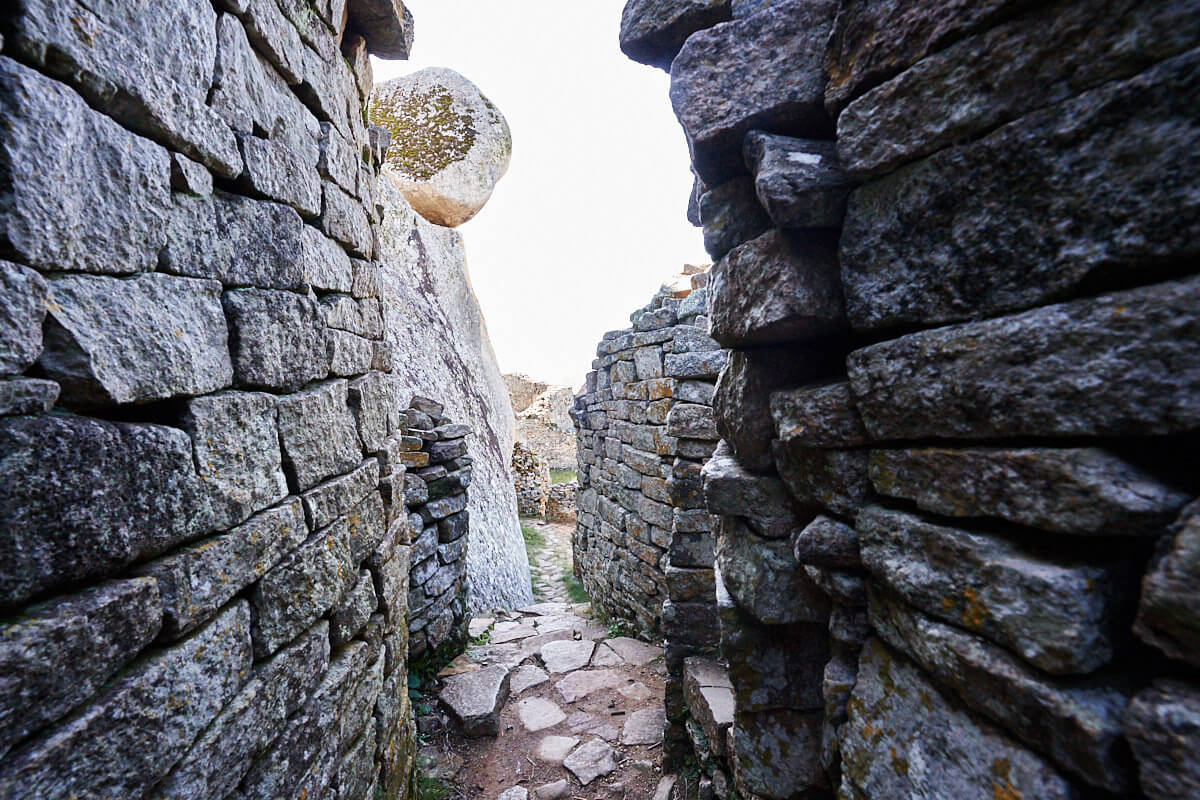
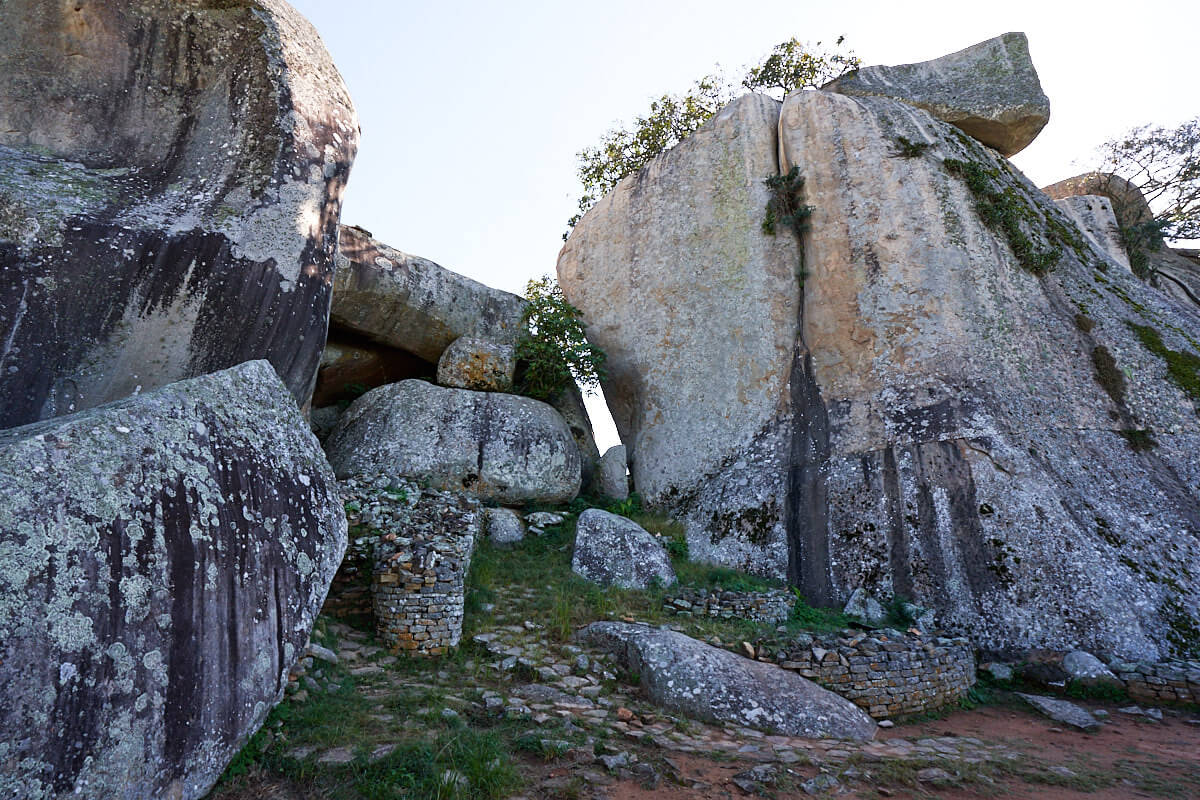
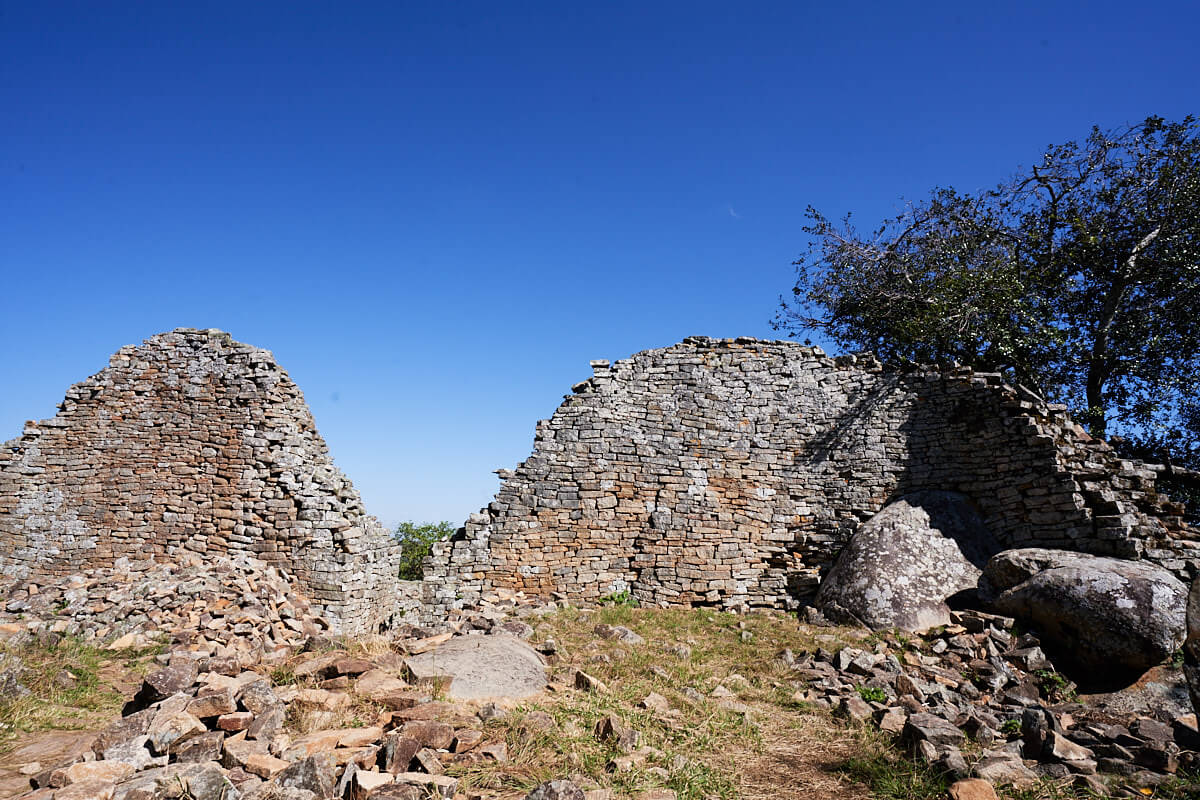
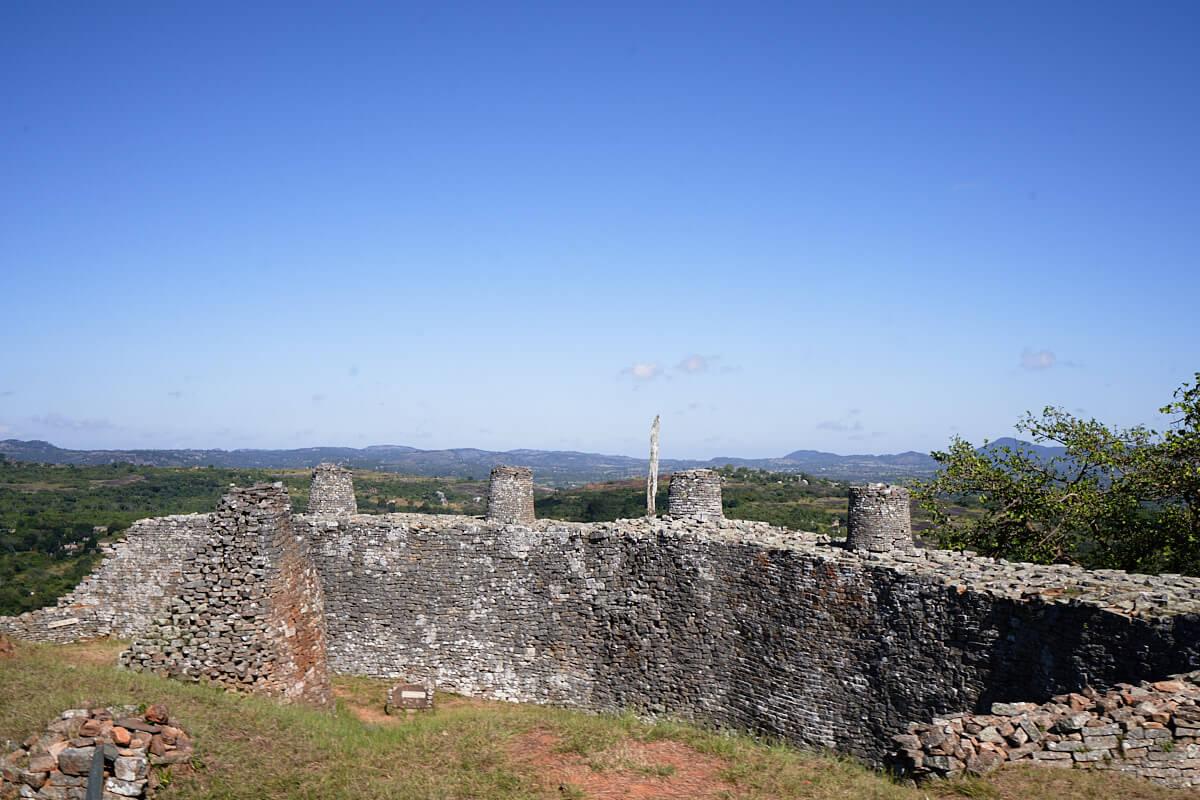
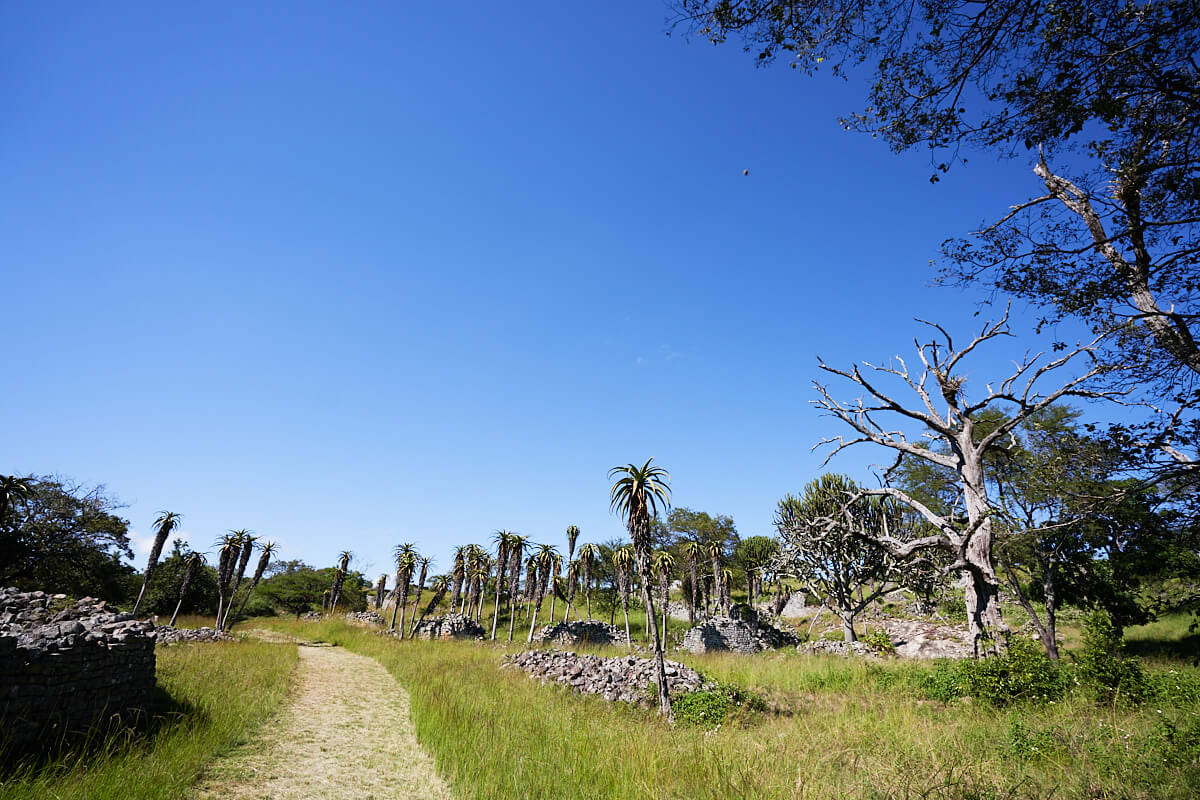
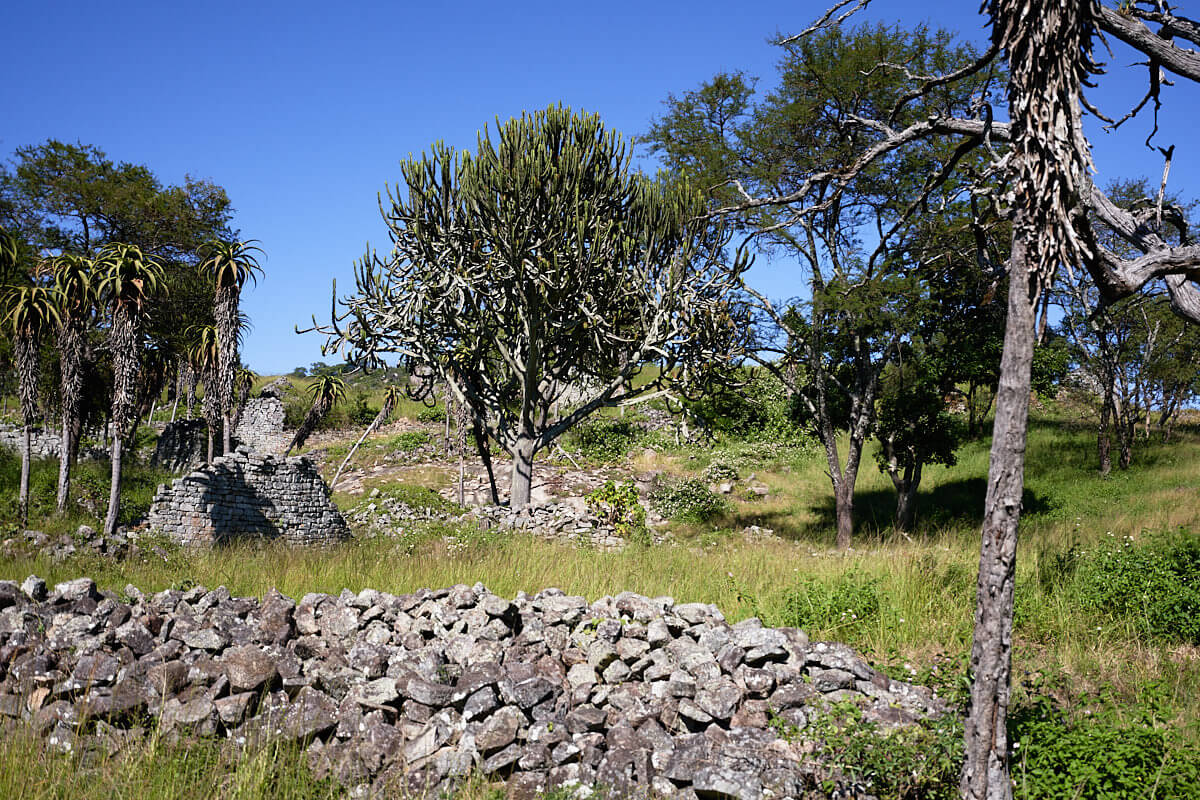
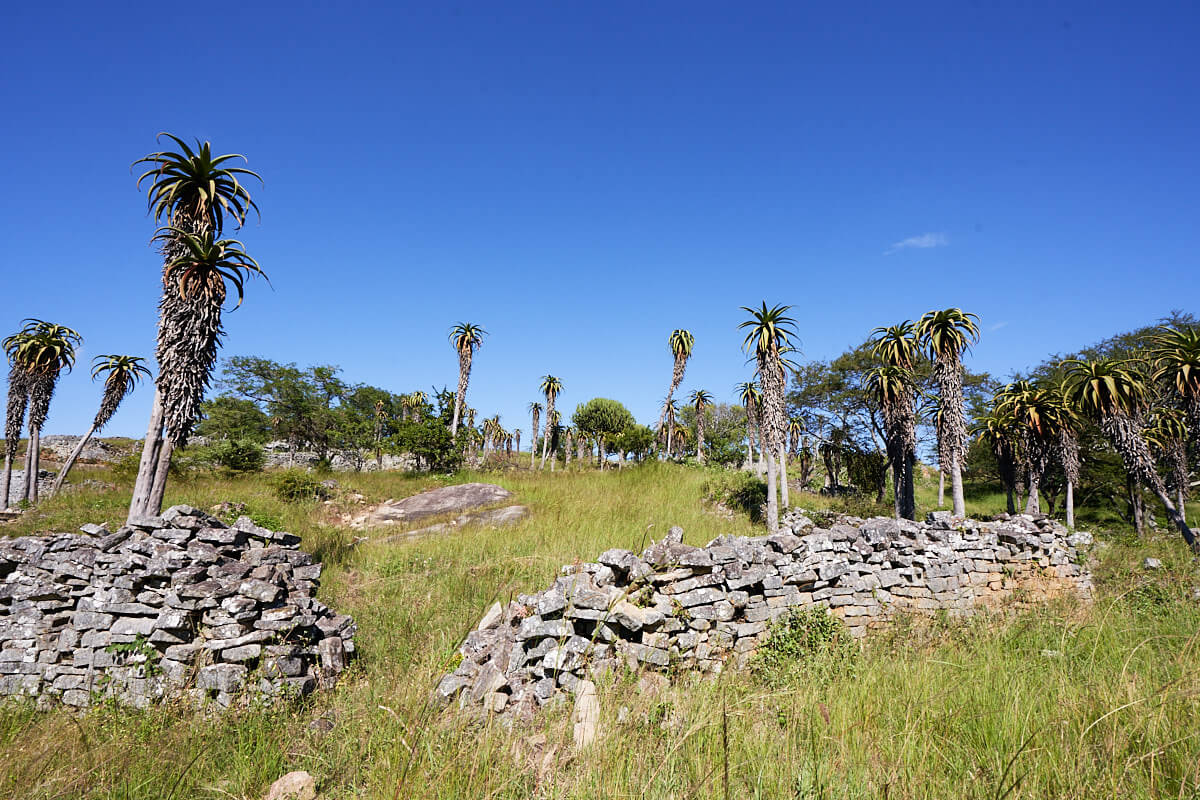
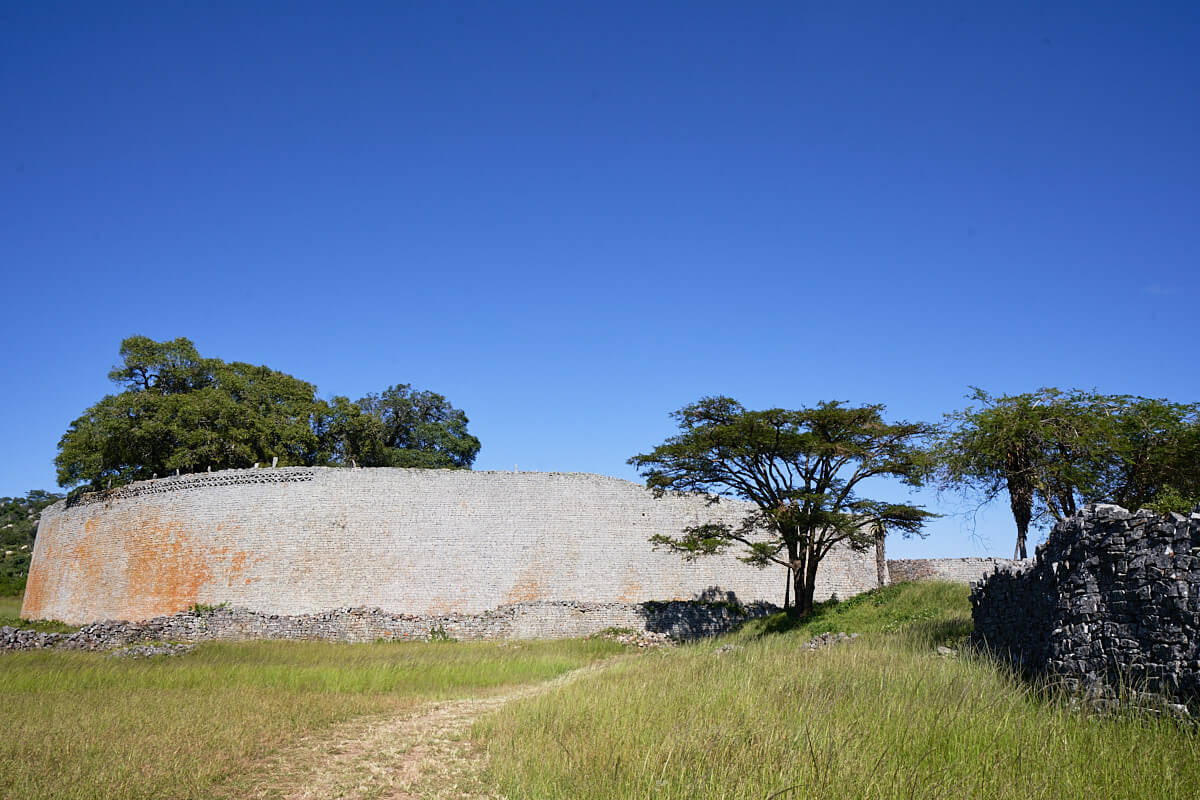
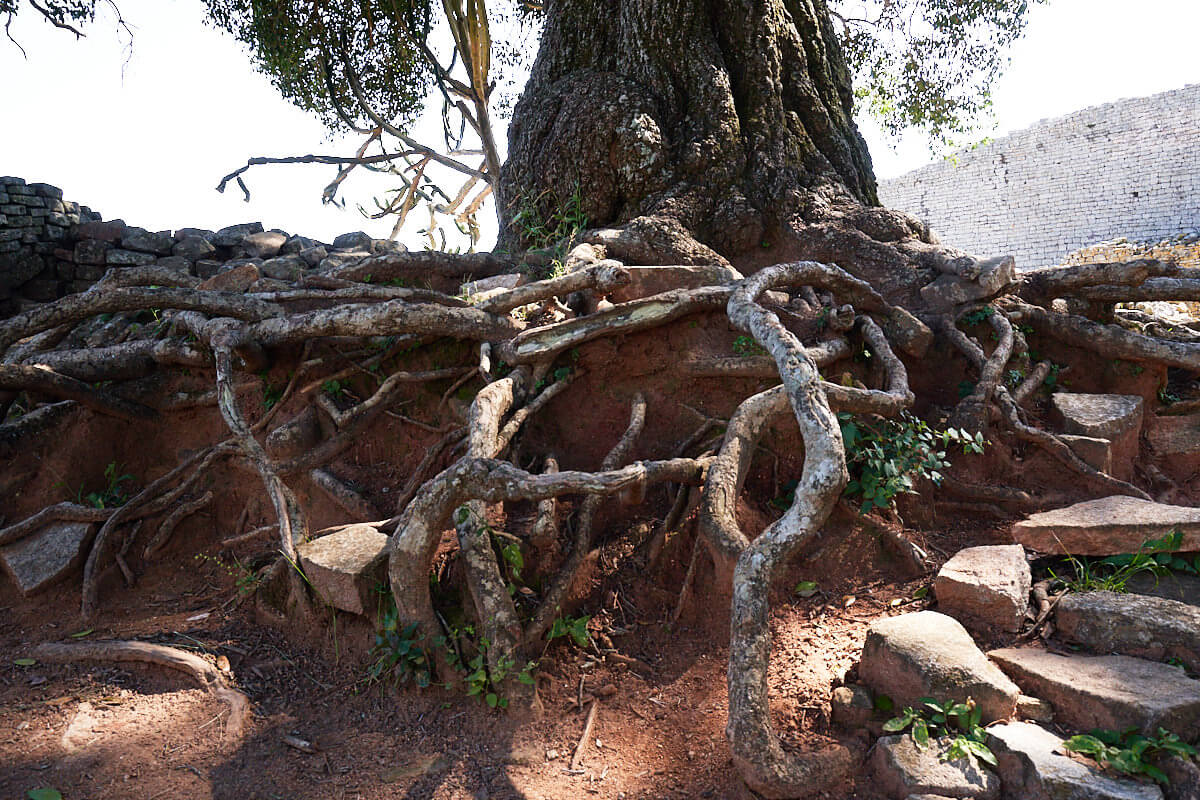
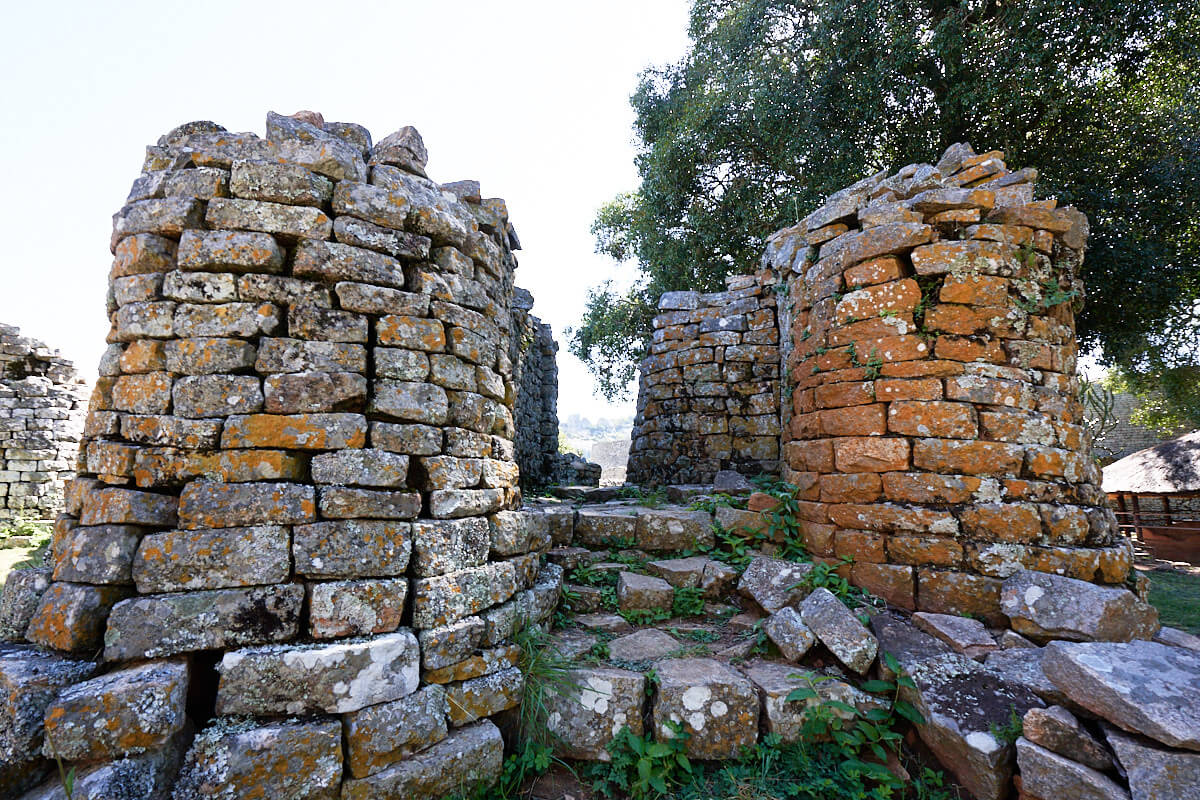
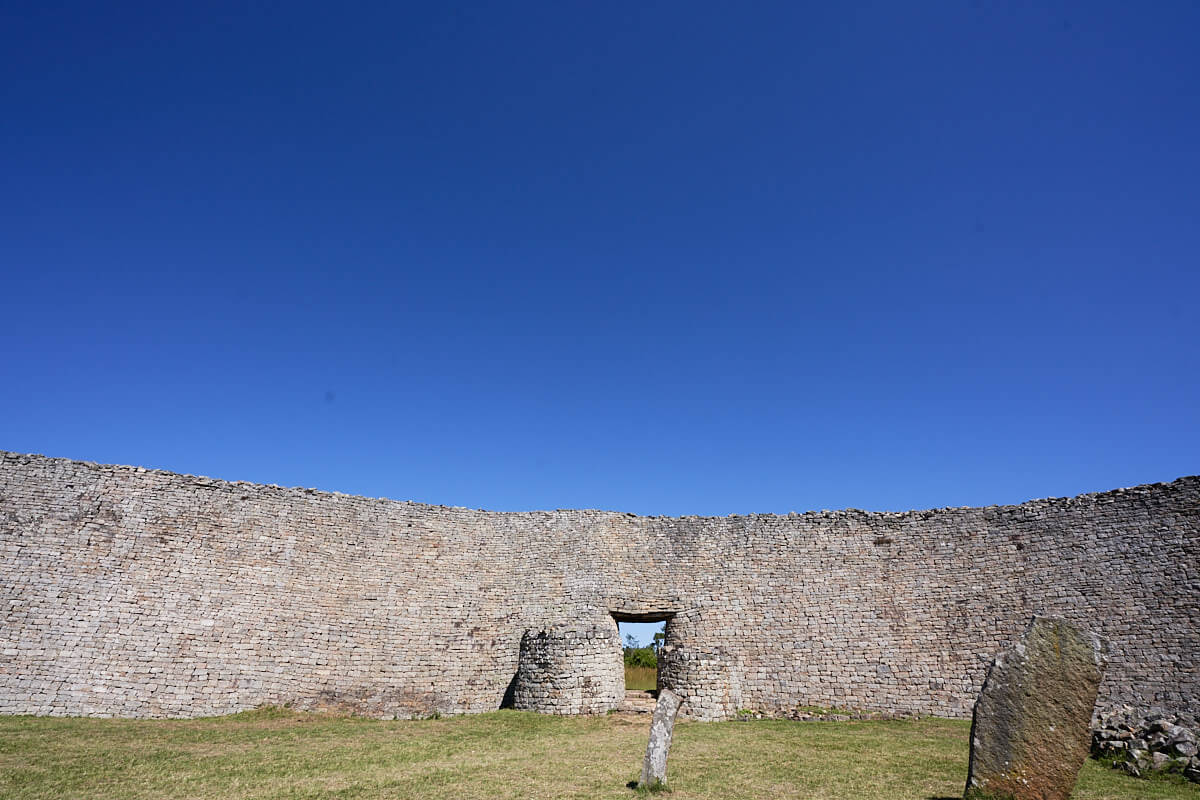
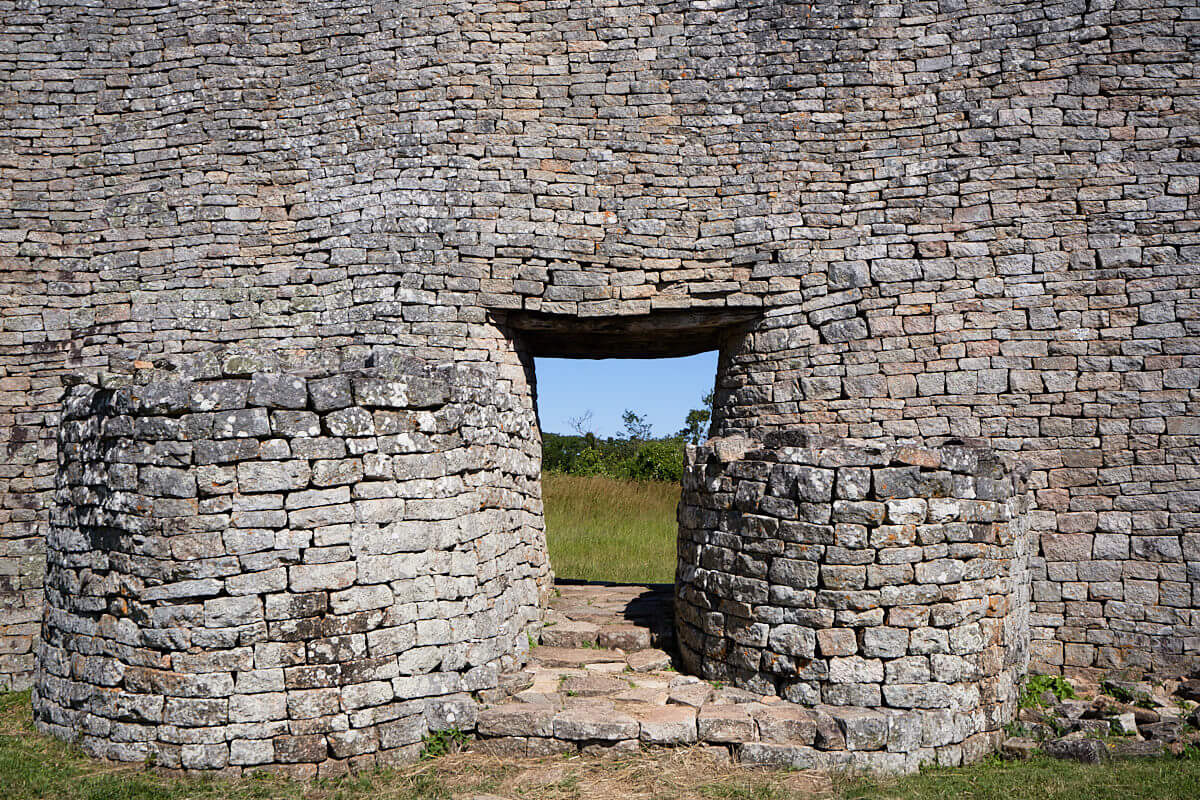
Via Bulawayo to Matobo NP
After visiting the ruins and refueling our car again without any problems, we set out to visit Matobo NP. We were told to visit it several times because of its scenic beauty, and we preferred not to miss it.
The park is home to some of the oldest rock paintings in Africa. For us, that was actually one of the highlights. The rock formations along the trails are partly interesting and nice to look at, but again we probably had no access. We took the opportunity and booked a rhino tracking for the evening
Rhinos without horns
Especially after our experiences in the bush we expected an extended bush walk where we would follow the tracks of rhinos and where it is open whether we find them or not. The walk turned out to be completely different. First, all rhinos in Zimbabwe are dehorned. This is done for two reasons – so the explanation of the rangers. First, they want to protect the rhinos from poachers. Secondly, they sell the horn to finance the expensive monitoring, protection and the costs of dehorning.
Furthermore, the rhinos are monitored 24 hours a day. Members of the Anti Poaching Unit sleep during the day and follow the rhinos on foot through the bush during the entire night to protect them. In Matobo, the last poaching incident was three years ago, which is very encouraging.
Rhinotracking in Matobo
A park ranger accompanied us to the members of the anti poaching unit. They told him the area where the rhinos are located. One of these guys climbed up a hill to give detailed instructions on how to get there. 15 minutes later, we found ourselves standing next to two adult white rhinos.
The members of the anti poaching unit joined us and whenever the rhinos got nervous, they calmed them down by imitating their sounds. In the end, we joined them for about 30 minutes, watching them and following them in the Bushveld. Conclusion of this part of Zimbabwe: “quite nice”. We may have just had too high expectations?
We made our way to Mana Pools. Guido was totally excited, a long cherished dream should come true.
